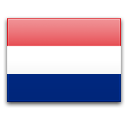
One hundred years ago, Eindhoven took a giant leap when it annexed Woensel, Strijp, Gestel, Tongelre and Stratum. Thus 1920 was the year of birth of 'Groot-Eindhoven', which was created partly to steer the turbulent growth of Philips (which had settled in Eindhoven in 1891) in the right direction. The expansion of Anton and Gerard Philips threatened to overwhelm those municipalities. Affordable housing for working-class families, education for their children, facilities for industry and public life, infrastructure for traffic and transport were needed. But Eindhoven was often behind the times and was unable to facilitate Philips. Moreover, it was not waiting for those workers from outside that Philips brought to Eindhoven. That is why the group itself created a 'company town' on an incomparable scale. The wet, the dry, the inner well-being of the people; the two Godfathers of Philips stood surety for it. Out of well-understood self-interest; their lighting and electronics group could only conquer the world if it had enough employees who did not mind having to relocate to a city that in principle was not much more than an oversized provincial town.
At the same time, Eindhoven is becoming a city where 'Rome' will rule. The Roman Pillar (around 1910 95% of the population of Eindhoven and surroundings is Catholic) decides about the personal life of the people, their political views, their moral sense; yes, even about their musical taste and reading. '24 Hour Romance', is the all-important motto. These two developments inevitably end up in each other's way. The Philipses are protestant, liberal, and dissenters; this is difficult to agree with the Roman doctrine, which is hostile to the "great city" and "the factory." There is a remarkable symmetry between the rise and fall of the Philips column and its Roman counterpart. Philips & Co is founded on May 15, 1891; on the same day Pope Leo XIII presents his encyclical “Rerum Novarum”. Peace is slowly established between the concern and the church. Both the Catholic column and Philips ascend from the middle of the first half of the twentieth century. This will remain the case until the late fifties, early sixties. Philips is then the largest private employer in the Netherlands. The Catholic column already shows its first cracks. After the Vatican Council of 1963, an exodus of the churches started and continues to this day.
At Philips, the emergency bells have been ringing since the 1970s. Operation Centurion (1990) and the relocation of Philips' headquarters to Amsterdam (1998) make it clear that the symbiosis between city and company is over. Today Eindhoven only has empty pews and Philips has been surpassed by others as the largest employer in the region. But the group left behind a legacy: Brainport, with A-brands such as ASML, NXP and VDL , which almost all originated from the Philips estate. Unfortunately, despite the economic success, there is also a growing dichotomy between rich and poor. And both Father and Mr Philips probably better guarded against that in their day. Book written by
Thom Aussems and Hans Horsten


